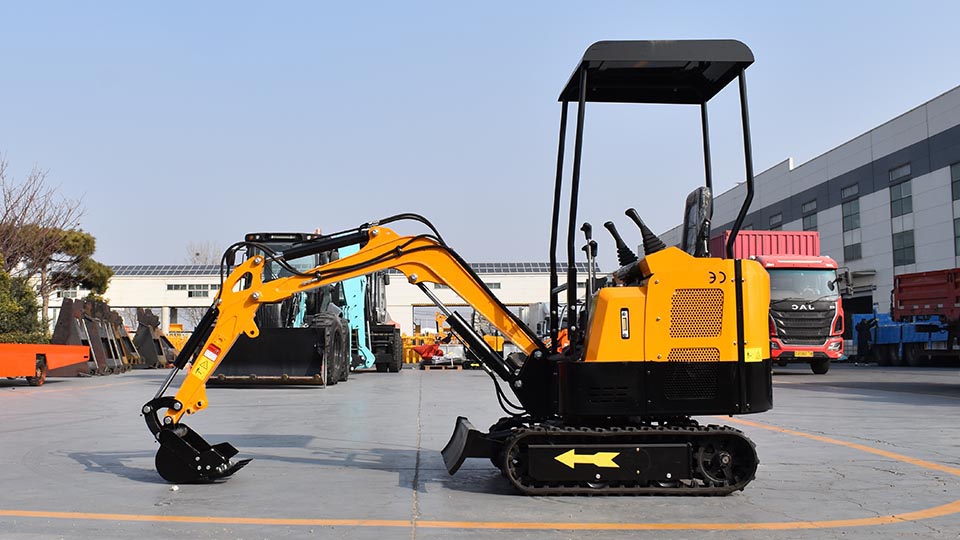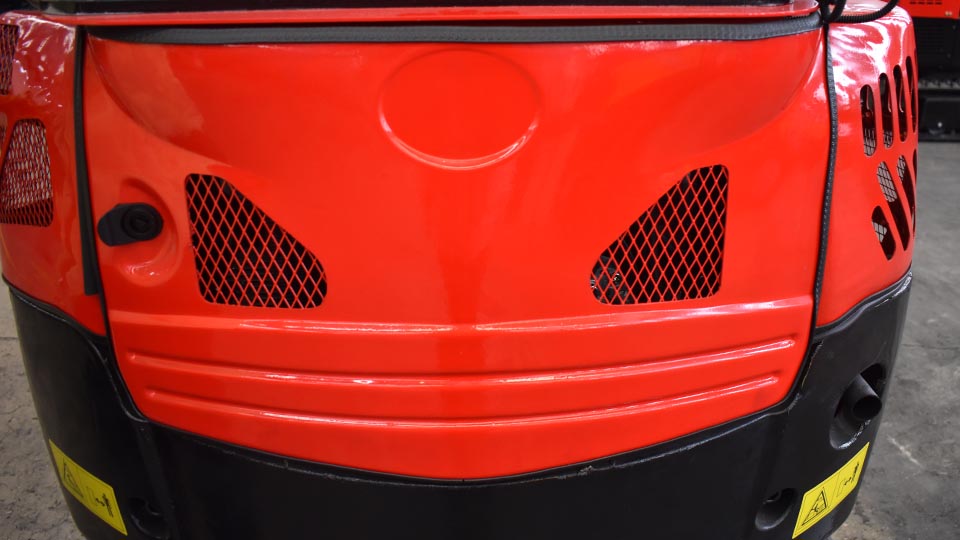Renting an Excavator for a Small Construction Project
Using an excavator for a small construction project can be highly efficient, but it also requires careful planning and a clear understanding of the machine's capabilities and limitations. A small project, such as digging a foundation for a shed, installing a swimming pool, or clearing land for a new driveway, can be completed far more quickly and with less manual labor with the right excavator.
Key Considerations Before Renting an Excavator
Before you even start looking at rental options, you need to answer a few critical questions.
1. What's the Scope of Your Project?
Define your project's goals precisely.
Digging a foundation? You'll need to know the depth, width, and length.
Trenching for utilities? The required depth and width are crucial.
Land clearing? Consider the type and density of vegetation and the presence of stumps.
Grading? You'll need to know the desired final grade and the amount of material to be moved.

2. What Size Excavator Do You Need?
This is arguably the most important decision. Excavators are categorized by their operating weight, which directly relates to their digging depth, reach, and lifting capacity.
Mini Excavators (under 6 tons): These are perfect for small-scale residential projects. They are compact, easy to transport, and can fit through tight spaces, such as a backyard gate. They are ideal for digging small foundations, installing irrigation systems, and landscaping. A 3.5-ton mini excavator is a popular choice for homeowners.
Small Excavators (6 to 10 tons): These offer a balance between power and maneuverability. They can handle larger residential jobs, such as digging a full-sized swimming pool or a larger foundation, but they may be more challenging to transport.
Larger Excavators (over 10 tons): These are generally overkill for small projects. They are expensive to rent, require specialized transport, and their size can damage residential properties.
3. What Attachments Do You Need?
The versatility of an excavator comes from its attachments. Standard rentals usually include a digging bucket, but you may need more.
Grading bucket: A wider, shallower bucket used for leveling and smoothing soil.
Hydraulic hammer (breaker): Essential for breaking up concrete, rock, or pavement.
Auger: Used for drilling holes for fence posts, piers, or trees.
Thumb: A claw-like attachment that works with the bucket to grab and hold objects like logs or rocks.
The Rental Process
1. Choosing a Rental Company
Look for a reputable local or national equipment rental company. Check online reviews and ask about their customer service and equipment maintenance. Get quotes from a few different places, as prices can vary.
2. Understanding the Rental Agreement
Read the fine print. Key points to look for include:
Rental duration: Hourly, daily, weekly, or monthly rates. A daily rate is often the most cost-effective for a small project.
Insurance: Most rental companies require you to have some form of insurance to cover potential damage to the machine. You may be able to use a homeowner's policy rider or purchase a rental company's plan.
Delivery and pickup: Ask about the cost of having the excavator delivered to your site. You'll also need to be clear about the pickup process.
Fuel: Clarify if the machine comes with a full tank and if you need to return it full.
3. Transportation
Most mini and some small excavators can be transported on a trailer pulled by a heavy-duty pickup truck. If you don't have the right vehicle, you'll need to pay for a delivery service.
Operating the Excavator Safely
Even if you have some experience, it's crucial to follow safety guidelines, as excavators can be dangerous if used improperly.
1. Personal Protective Equipment (PPE)
Always wear a hard hat, safety glasses, steel-toed boots, and gloves.
2. Site Preparation
Before you start, walk the site and identify any potential hazards:
Underground utilities: Call 811 (in the U.S.) a few days before digging to have all utility lines marked.
Overhead power lines: Be aware of the excavator's maximum reach and proximity to power lines.
Slopes and trenches: Never operate on a slope that's too steep, and be aware of the risk of trench collapse.
3. Machine Operation
Read the manual: Familiarize yourself with the machine's specific controls and safety features.
Check the machine: Before each use, perform a pre-operation inspection, checking for fluid leaks, damaged hoses, or loose components.
Maintain awareness: Always know where people, pets, and property are in relation to your machine.
Never overload the machine: Be aware of the excavator's lifting capacity.

Use the machine as intended: Don't use the bucket to lift objects or people unless the machine is specifically equipped for that purpose.
The Alternative: Hiring a Professional Operator
While renting an excavator and doing the work yourself might seem like a good way to save money, it may not be the best choice.
Cost: The cost of an operator's time may be offset by the time you save and the reduced risk of making costly mistakes.
Expertise: A professional operator can complete the job faster, more accurately, and with less risk of damaging property or injuring themselves. They also know how to handle unexpected issues, such as hitting a large rock or a difficult soil type.
Equipment: A professional will arrive with the right equipment and attachments for the job, so you don't have to worry about renting the wrong machine.
For a small but complex project, hiring an experienced professional is often the safer and more efficient option. For a simple project, such as digging a small trench, a mini excavator may be a good DIY project.
By carefully considering your project's needs, choosing the right equipment, and prioritizing safety, you can successfully use an excavator to get your small construction project done.
Post time:Sep-25-2020
